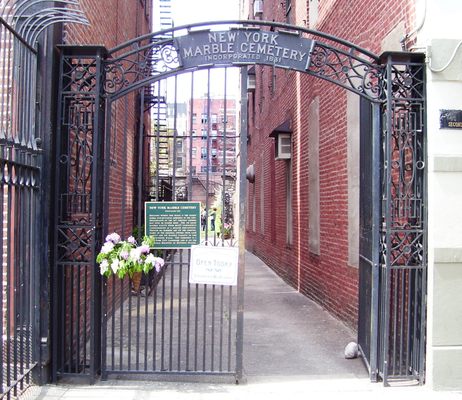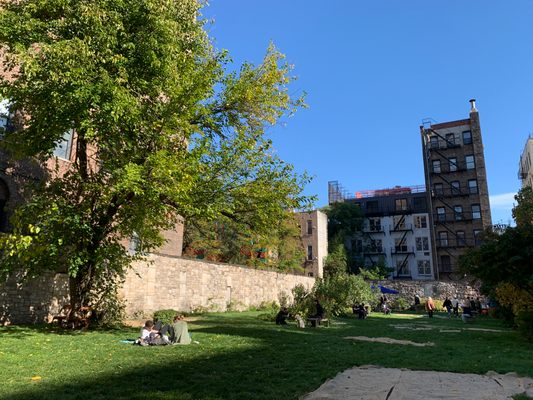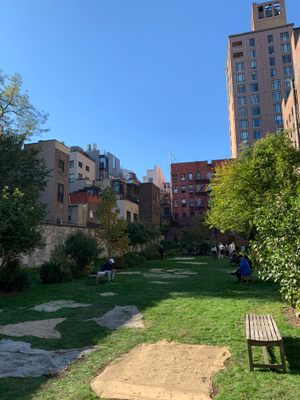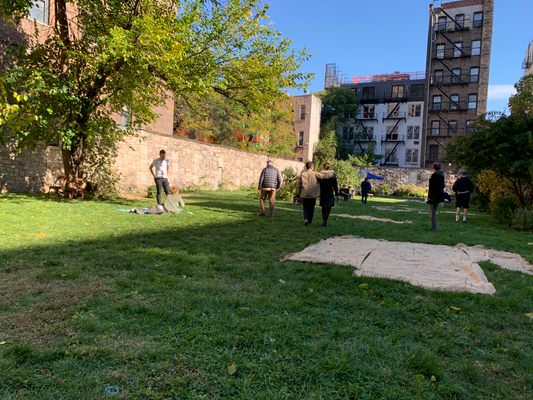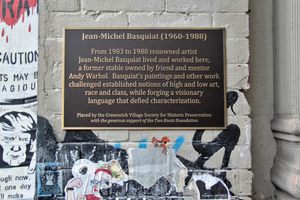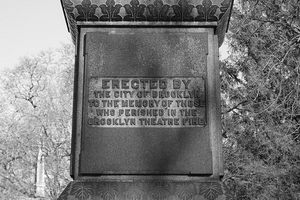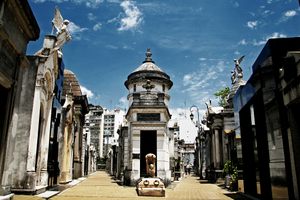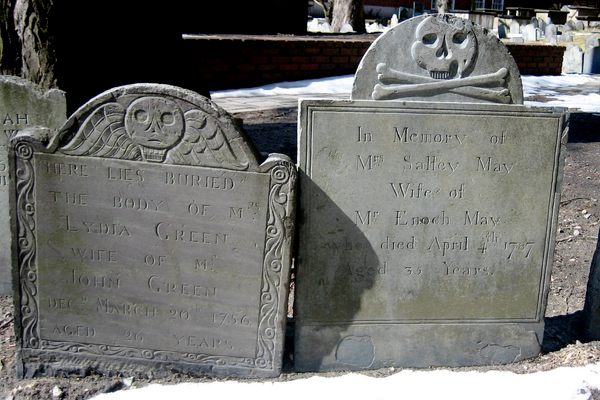About
From a wrought iron gate on Second Avenue, an alleyway leads to a secluded garden, barely visible from the busy sidewalk. Although there are no headstones or monuments, this is the New York Marble Cemetery, one of the hidden cemeteries of New York that has survived as a quiet memorial while the city transformed around it. In the 19th century, the New York Marble Cemetery had over 2,000 burials.
The New York Marble Cemetery was created in response to the yellow fever outbreak that started near the Trinity Church cemetery. The Common Council ruled to ban earth graves in lower Manhattan to limit the spread of the Caribbean-born disease. Instead, marble vaults were built ten feet underground. Names from the original vault owners are engraved on marble tablets that are set into the stone cemetery walls. These tablets act as a guide for the location of the vaults underground. In order to access a vault, a stone slab has to be exposed by digging by hand, that is then lifted off to expose the entry shaft going down to the slate doors. Some of the vaults also require a key to open the door.
Over 150 vaults made from solid white Tuckahoe marble are located just below the half-acre grassy space in the interior of the East Village block. The New York Marble Cemetery is the oldest public non-sectarian cemetery in the city. After being established in 1830, it held most of its burials between 1830 and 1870, and took in its last deceased in 1937. In the middle of the East Wall, there is a large marble plaque that is now illegible, but used to state: "New York Marble Cemetery - A Place of Interment for Gentlemen." However most of those buried in the cemetery were not members of the high society, but were merchants, lawyers, and ship owners. The cemetery was the original resting place of former president James Monroe, who was buried in the Gouverneur family vault after he died at his daughter's house in New York City in 1831; he was subsequently reinterred at Hollywood Cemetery in Richmond, Virginia, in 1858.
The Dead House that temporarily held remains used to be at the southwest corner of the cemetery, until it was removed in 1955. It was located right over the entry to Vaults 51 and 52, so that Perkins Nichols, the cemetery's developer and organizer, would have easy access to his Vault 51.
When rural cemeteries, like Green-Wood Cemetery in Brooklyn, became fashionable in the late 1830s, about one fourth of the people buried in the Marble Cemetery were excavated and reinterred elsewhere.
Much of the cemetery has since deteriorated due to the delicate nature of the soft marble and one of the walls is missing. Nonetheless, the cemetery has remained there, tucked away in Manhattan for over 180 years, more than can be said about much heartier structures.
Related Tags
Know Before You Go
The wrought iron entrance gates are on Second Avenue between 2nd and 3rd Streets. Note that the New York City Marble Cemetery is nearby and not the same place. The cemetery is open to visitors at least once a month from April to October. Check the website for the dates.
Community Contributors
Added By
Published
July 1, 2010

